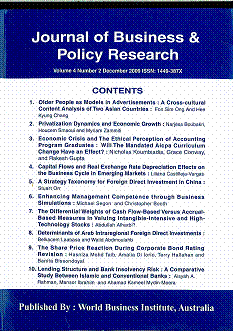Pages
19 – 41
Vietnam is a developing country with a population of approximately 90 million (11/2013). The availability of electronic banking (e-banking) over ten years ago in Vietnam marked a significant development for society in general and for banking in particular. Research attention has so far focused on the development and implementation of e-banking applications in Vietnam. However, there is at present very little research about customer trust in Vietnamese e-banking. Most research about e-banking in Vietnam focuses on the adoption of e-banking. This paper, part of an investigation of critical factors affecting customer trust in e-banking, explores the effect of trust on aspects of customer intention to use e-banking in Vietnam. The proposed research model integrates constructs from other disciplines, such as psychology, sociology, and electronic commerce. The basic model for this study has been adopted from the Technology Acceptance Model to show the characteristic of e-banking, including the addition of another belief, trust, to increase the understanding of customer intention to use e-banking in Vietnam. A Structural Equation Modelling approach has been used to evaluate the research model. The sample consists of 464 Vietnamese participants who used and are using e-banking services. The results of the empirical analysis suggest that trust has significant effects on both attitude and behavioural intention to use e-banking. The perceived usefulness has a positive significant impact on trust, attitude towards using e-banking and the behavioural intention to use it. The perceived ease of use has a positive, significant effect on trust and perceived usefulness. However, perceived ease of use does not have a significant effect on the attitude towards using e-banking. Attitude towards using e-banking has a positive impact on the behavioural intention to use e-banking. This study begins to fill the gap noted in the literature by providing a model for the effect of trust on customer intention to use e-banking. The study’s findings offer help for Vietnamese banks, policy makers and customers to clarify and develop the effect of trust on customer intention in using these e-banking services.

